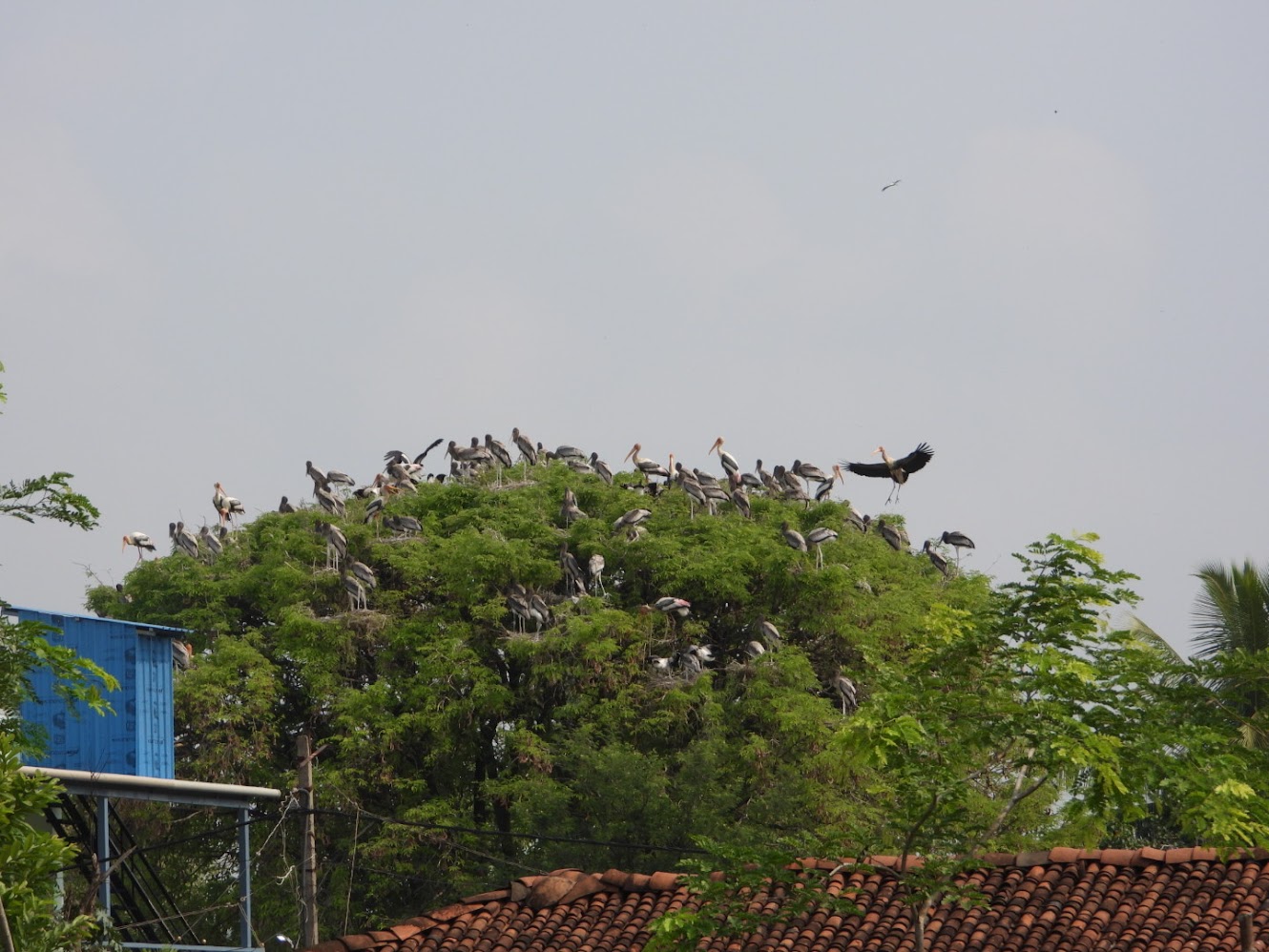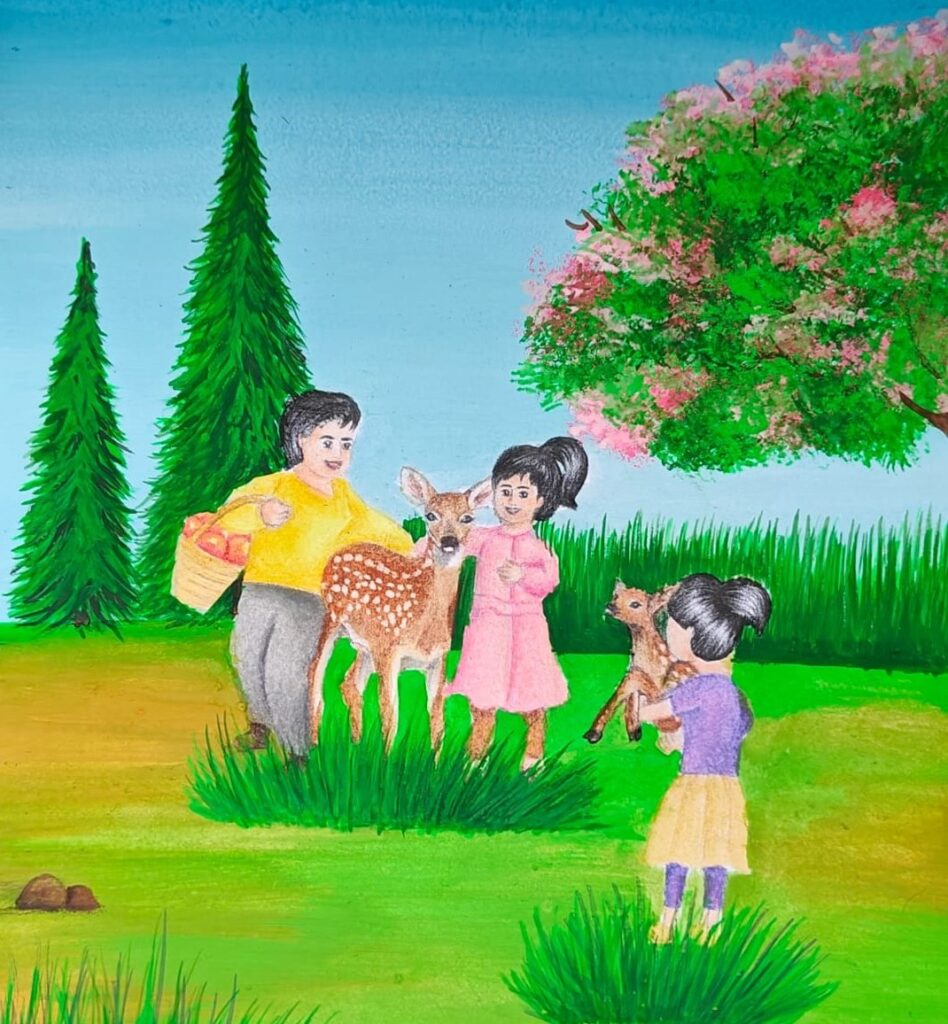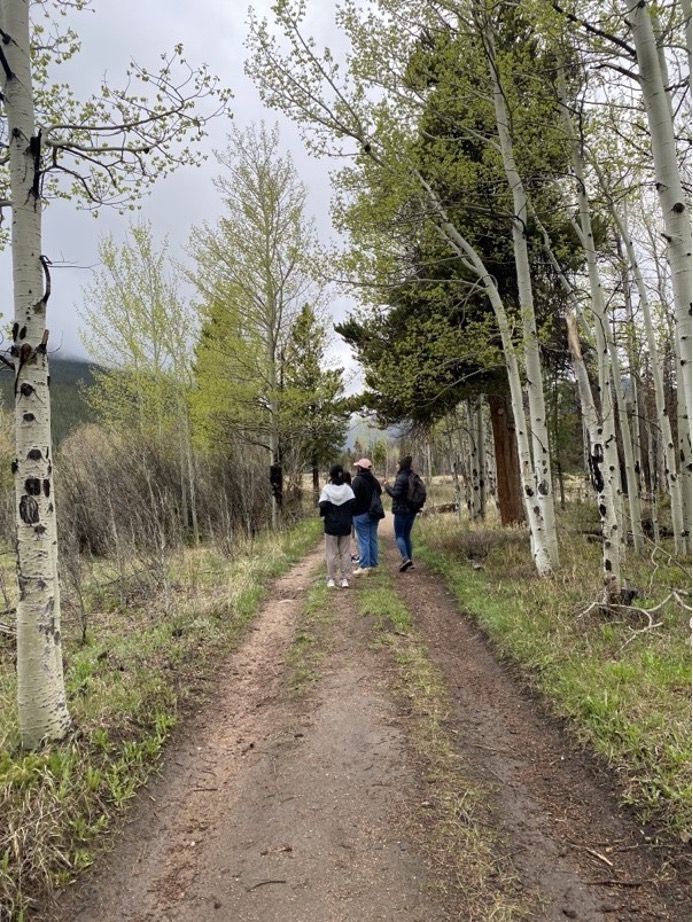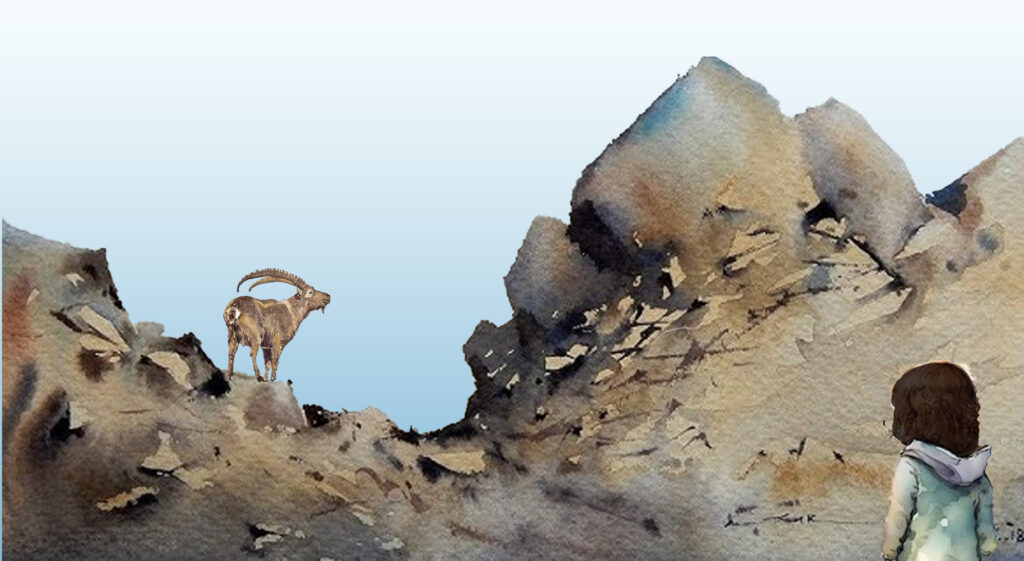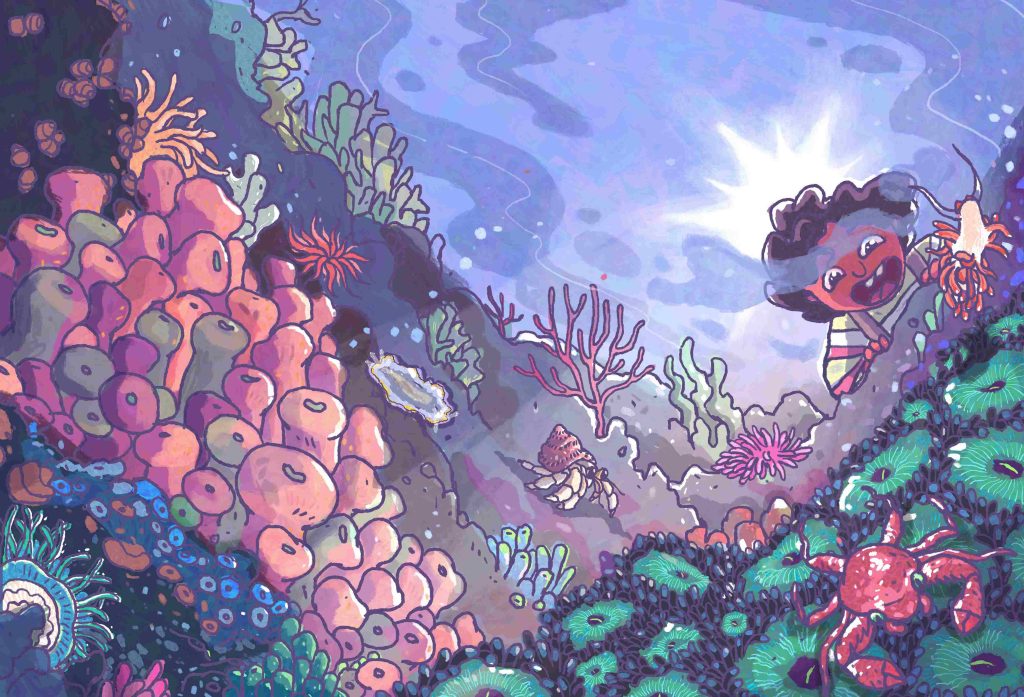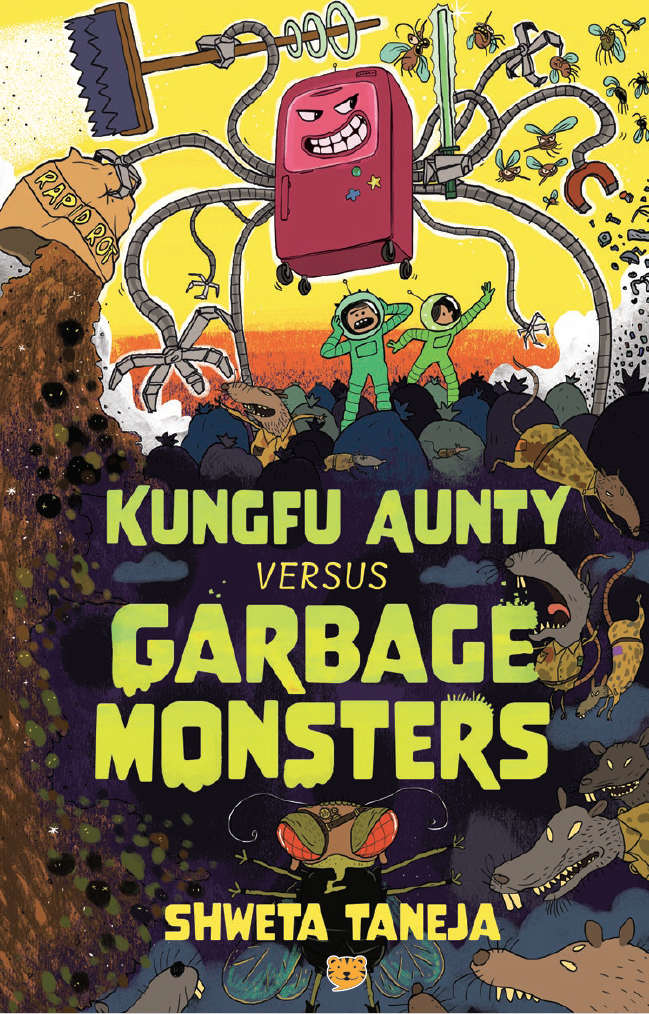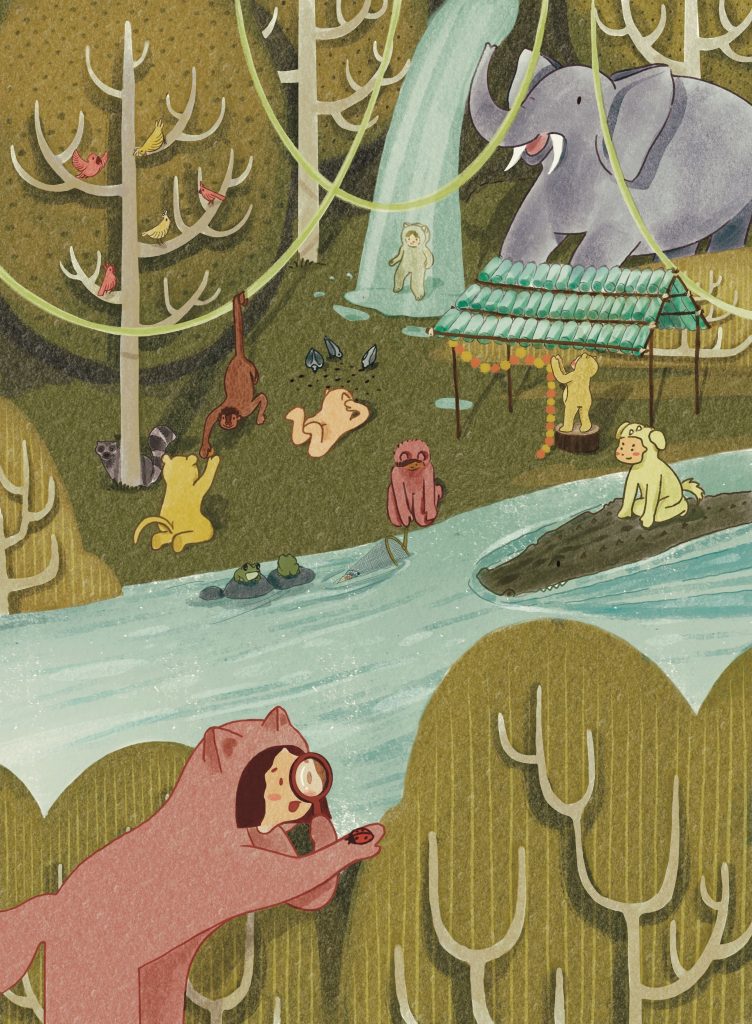Feature image: A colony of painted storks in Kokkare Bellur village in Karnataka, India (Photo credit: Green Panther Club, Bengaluru)
Off the busy Bengaluru-Mysuru highway in southern India is a nondescript village called Kokkare Bellur. We reached it at the crack of dawn, when the people were busy going about their morning activities. Just like in any other village, we saw dogs, cows, hens, and buffaloes. At first glance, Kokkare Bellur didn’t look any different.
However, as we walked through the narrow lanes of the village, a spectacle unfolded—and that is when we realised that Kokkare Bellur is no ordinary place. We saw its winged children—young painted storks. Hundreds of nests were bustling with activity. We heard the loud cackling of hungry chicks whose parents were away looking for food. When we looked up, we saw many painted storks flying high in the sky. The whole place was bustling with activity.
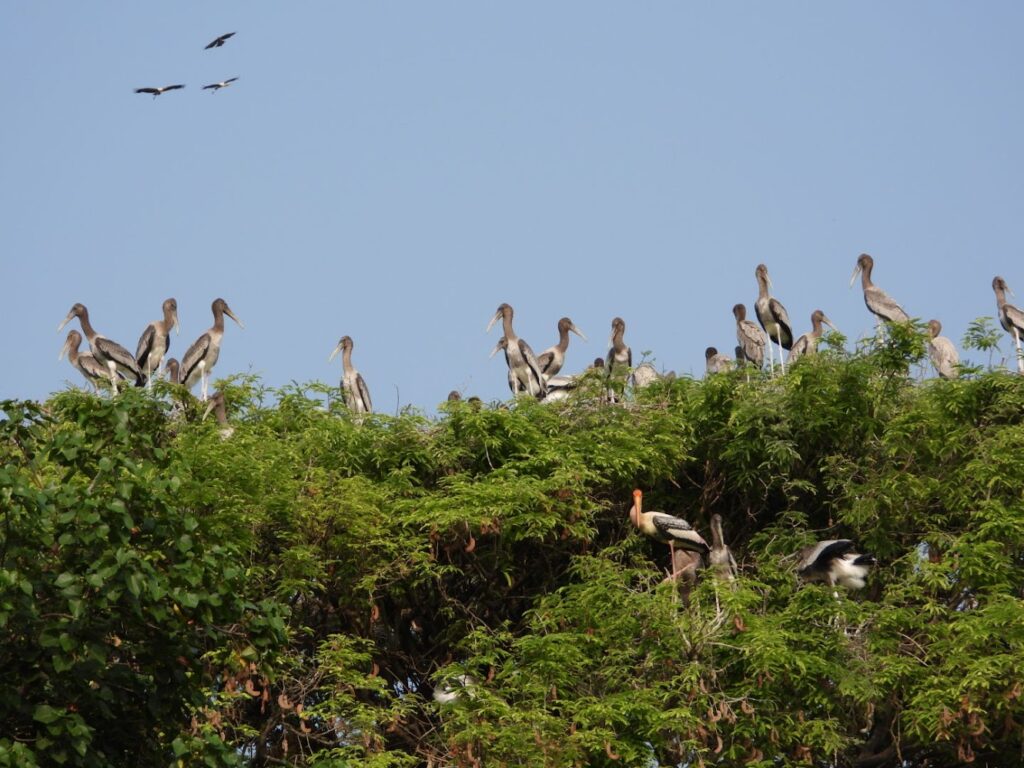
In Kannada, kokkare means stork. This village is a traditional nesting site not just for painted storks, but also spot-billed pelicans. Thousands of birds come to this village every year to breed and raise their young.
Why the birds chose this particular village to nest is still a mystery. The story goes that Kokkare Bellur was on the banks of the Shimsha River. In 1916, a plague forced the villagers to abandon their settlement and relocate a few kilometres away. To the surprise of the villagers, the birds followed them—even though there was no major water body.
Long ago, the people of the village collected the birds’ droppings (guano), which were rich in nitrogen and phosphate, to use as a fertiliser. The birds seemed to feel safe amidst the human settlement, so they continued nesting there—an example of a symbiotic relationship, in which each species helps the other. Although the villagers are no longer dependent on guano for fertiliser, they continue to provide a safe haven for the birds.
Did you know that Kokkare Bellur is the only community reserve in Karnataka? For decades, the birds were protected by the villagers themselves. Now, the state Forest Department and organisations such as WWF are actively engaged in conservation efforts alongside the villagers.
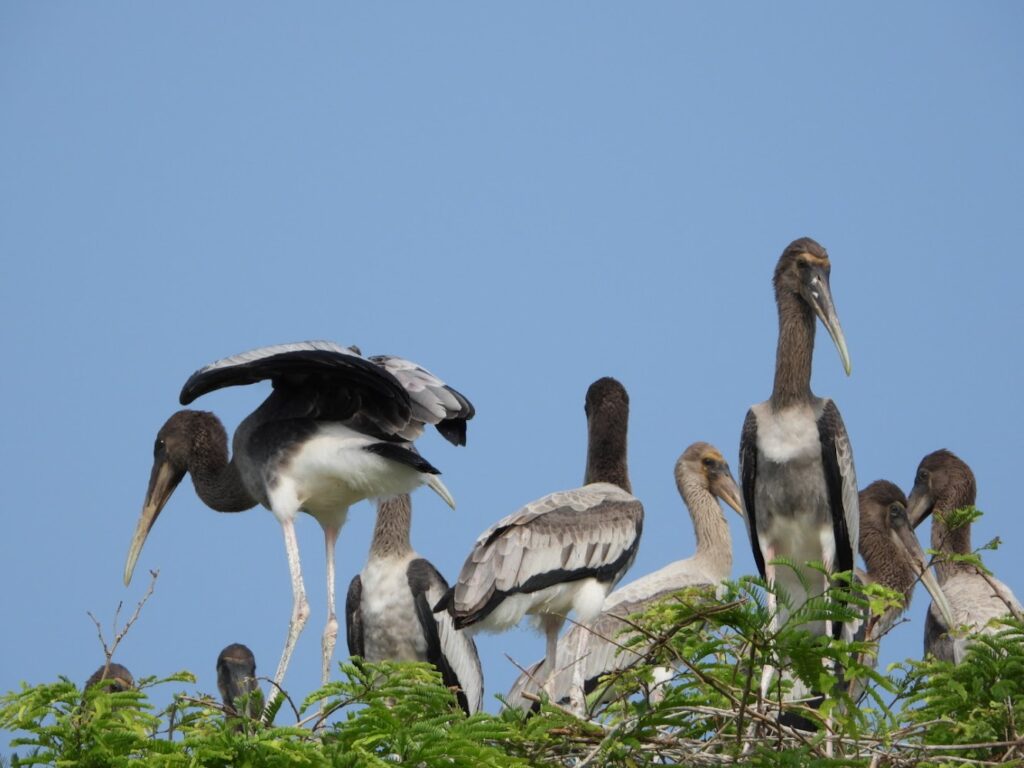
A series of thoughtful gestures and actions ensure the well-being and protection of these birds. Nets are fixed under the trees to protect any chicks that fall out of their nests. The trees are numbered and monitored by the Melukote Wildlife Range Forest Officer as well. Accidents can happen, therefore there is a rescue centre where injured birds and chicks are taken care of until they can fly. The Forest Department has also provided special rescue bikes with a basket in the front in which the injured birds can be carried.
In 2016, the power lines throughout the village were insulated to prevent bird deaths by electrocution. Although some 30–40 birds used to die each year, none have been electrocuted since the power lines were modified. The Wildlife Wing of the Forest Department also offers compensation to people who are not able to harvest fruit from their tamarind trees while the birds are nesting there.
Kokkare Bellur is a great example of villagers coming together to care for a species that is Near Threatened (populations are decreasing) as per the IUCN Red List. Even though the relationship between the birds and villagers started off with the villagers benefiting financially from the birds, the storks stay on as part of the heritage now.
Hopefully, generations of children and grandchildren, both human and avian, will continue to enjoy this spectacle!
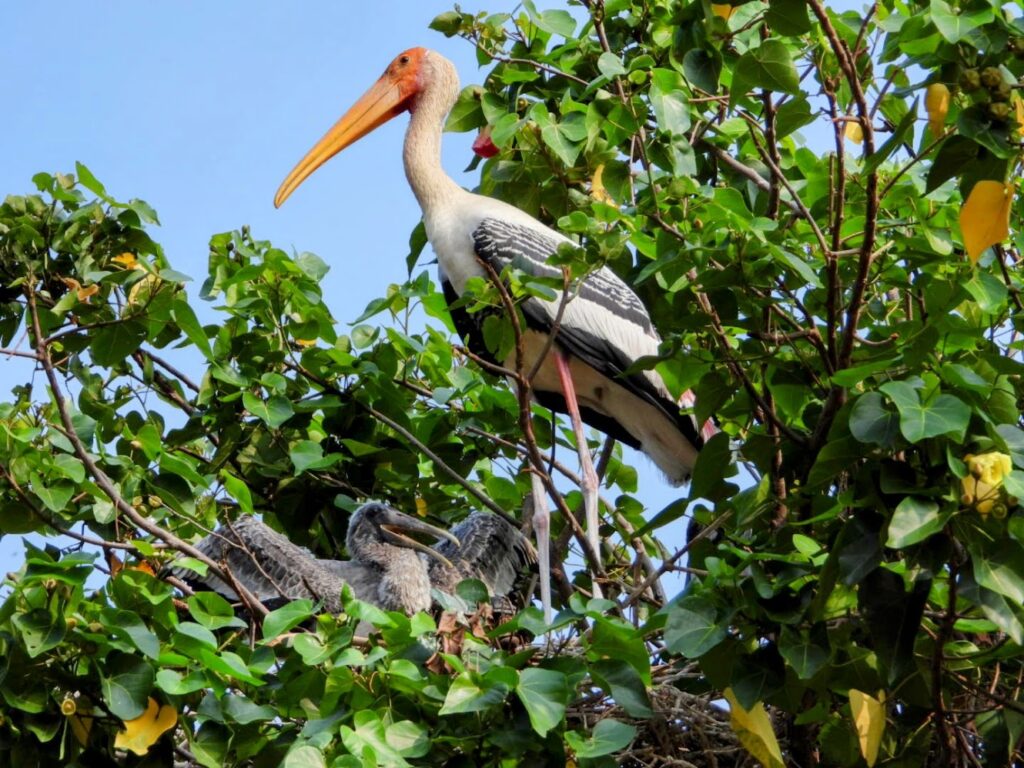
| What I learned about painted storks During my visit to Kokkare Bellur in 2024, there were about 1,600 painted storks in the village. Each tree had about 30–40 birds with their chicks. Painted storks are large, majestic birds that are 3–4 feet tall and have a wingspan of 5–6 feet. Given their size, the birds pick sturdy trees such as tamarind to make their nests. The male and female birds contribute equally to parenting and raising their young. The baby storks are whitish grey with black beaks, while the juveniles are a dull brown with beaks starting to show signs of colour. Adults are black and white with colourful feathers at the edge of their wings. They also have colourful yellowish-orange beaks and orangish-pink legs. |
